[FIX] Driver ACPI Returned Invalid ID for a Child Device
Some Windows users are experiencing constant freezes or even critical crashes at apparently random intervals. Upon checking the Event Viewer, they discover a recurring critical event with the following error message: “Driver PCI returned invalid ID for a child device”- This problem is confirmed to occur on Windows 7, Windows 8.1, and Windows 10.
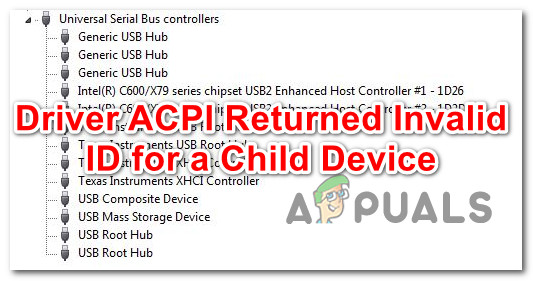
After investigating this particular issue, it turns out that there are several different common scenarios that might contribute to the apparition of this error. Here’s a list of potential culprits:
- Duplicate XHCI Controller driver – As it turns out, one of the most common instances that will cause this error is a scenario in which your OS installation contains two instances of the Texas Instruments XHCI Controller driver. In this case, you can fix the issue by uninstalling both drivers and restarting your computer to allow your OS to install a single generic equivalent to fill in.
- Memory fault – There are a lot of user reports blaming this issue on a memory fault, so take the time to investigate and confirm that the error is not being caused by your RAM stick/s. You can use tools like HWmonitor and Memtest to make sure your RAM sticks are functioning as they should.
- Outdated Chipset drivers – Under certain circumstances, you can see this issue occurring due to some type of inconsistent chipset drivers that are causing the system to crash during resource-demanding activities. This is known to happen with both AMD and INTEL processors. The fix, in this case, is to just update your chipset drivers to the latest version available.
- Outdated BIOS / UEFI driver – In some cases, an outdated BIOS version can be the underlying cause for this particular issue. In this case, updating your BIOS / UEFI firmware to the latest should allow you to fix the issue.
- Conflicting AV software – If you’re using Avast as the default security suite on your WIndows installation, chances are that’s the culprit you should be looking at. There are a lot of user reports pointing towards this issue, and in every case, the only viable fix was uninstalling the security suite and replacing it with a different 3rd party equivalent or with Windows Defender.
- System File Corruption – Under more serious circumstances, you might see this error popping up due to some type of system file corruption. In this case, refreshing every Windows component with a procedure like a repair installing or clean install is the only choice at this point.
Now that you know the culprit that is most likely responsible for this issue, here’s a list of methods that other affected users have successfully used to fix the issue:
Method 1: Uninstalling the XHCI Controller (if applicable)
As it turns out, one of the most common scenarios that will cause the “Driver PCI returned invalid ID for a child device” error is an instance in which two instances of the Texas Instruments XHCI Controller driver are conflicting with each other causing freezes for critical crashes.
Several affected users dealing with the same issue have reported that they’ve finally fixed the problem and prevented the creation of new instances of this error by using Device Manager to uninstall both instances of the recording device driver eliminating the conflict brought about by duplicated drivers.
After doing this, your operating system should reinstall only one instance which should ensure that you no longer see these types of error logs.
If this scenario is applicable and you’re looking for step-by-step instructions to fix the “Driver PCI returned invalid ID for a child device”, follow the instructions below:
- Press Windows key + R to open up a Run dialog box. Inside the text box, type ‘devmgmt.msc’ and press Enter to open up Device Manager. If you’re prompted by the UAC (User Account Control), click Yes to grant admin access.
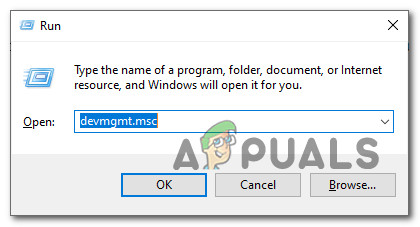
Opening Device Manager - Once you’re inside Device Manager, scroll down through the list of devices and expand the drop-down menu associated with Universal Serial Bus controllers.
- Inside the Universal Serial Bus controllers drop-down menu, right-click on every Texas Instruments XHCI Controller and choose Uninstall device from the context menu that just appeared.

Uninstalling every instance of the Texas Instruments XHCI Controller driver - Confirm the uninstallation of both drivers, then reboot your computer. At the next startup, your OS will notice that the XHCI driver is missing and install a generic equivalent that should no longer produce the same Event Viewer errors.
In case this scenario is not applicable or you’ve already followed the instructions above and you’re still dealing with the same “Driver PCI returned invalid ID for a child device”, move down to the next potential fix below.
Method 2: Investigating for a Memory Fault
Since this error is often associated with a memory fault, the next thing you should do is test your RAM sticks to see if they are causing these types of issues. Most commonly, you are either dealing with a memory stick that is not properly seated. Worst case scenario, one of your memory sticks is starting to fail.
If you’re using a dual-channel setup, you should start by taking out just one stick of RAM and see an experiment with different stressing activities to see if the same kind of error repeats.
IMPORTANT: If you have previously overclocked your RAM frequency or voltage (or both), revert back to the default values and monitor the situation with a tool like HWmonitor to check for any voltage or temperature spikes that might end up producing this error.
Additionally, you should also consider doing a Memtest scan to verify the integrity of your RAM sticks.
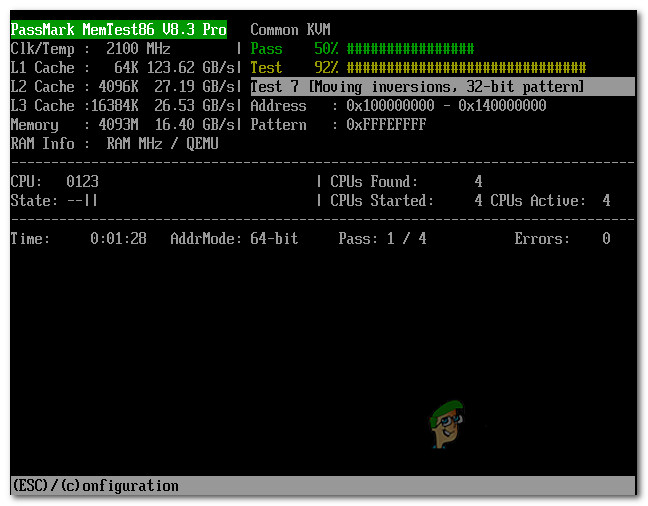
In case the investigations you did above didn’t reveal any underlying issue with your RAM, move down to the next potential fix below.
Method 3: Updating your Chipset Drivers
Another fairly common culprit that might contribute to the apparition of this error is an outdated chipset driver that’s contributing to the instability of your system during resource-demanding tasks. Chipset drivers are there to handle communications between the processor, the GPU, the HDD / SSD drives, and the memory.
Several affected users have reported that they finally managed to fix the “Driver PCI returned invalid ID for a child device” error by installing the latest compatible chipset driver. This particular fix is confirmed to be effective with both AMD and Intel chipsets.
And since the exact instructions on updating your chipset drivers will be different from platform to platform, we’ve put together two separate guides that will show you how to do this with both AMD and Intel chipsets:
A. Updating the Intel Chipset Driver
- Open your default browser and visit the following download page for the Chipset INF Utility.
- Once you’re inside the correct location, click the Download button in the top-left corner of the screen.

Downloading the Intel chipset driver - After you accept the User Account Control prompt, click I accept the terms in the license agreement to agree with the ToS.

Agreeing with the Terms of Licensing - Wait until the download is complete, then use a utility like 7zip, WinZip, or WinRar to extract the contents of the archive.
- Next, double-click on the SetupChipset.exe executable, then follow the on-screen prompts to install the latest chipset driver.
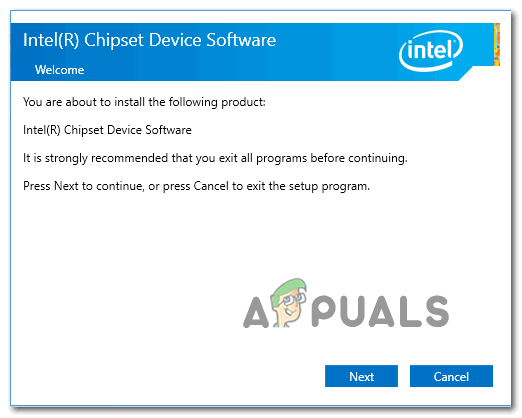
Installing the Chipset driver - Once the installation is complete, restart your computer and wait for the next startup to complete. After your computer boots back up, repeat the action that was causing these Event Viewer errors and see if the issue is now resolved.
B. Updating the AMD Chipset Driver
- If you’re using AMD equipment, open your default browser and visit the official AMD drivers & support page.
- Once you’re on the correct page, scroll down and use the Search for your product section to choose Chipsets from the column on the left, then choose your processor socket from the right section.
- After you select the appropriate socket, select the processor from the newly created column and click on Submit to find the correct chipset version.
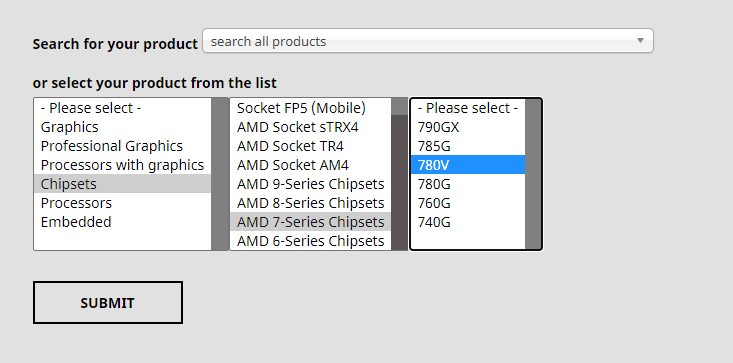
Downloading the latest compatible AMD chipset driver - Once the download of the executable is complete, double-click on the installer you’ve just downloaded, then follow the on-screen prompts to complete the installation of the latest chipset drivers.
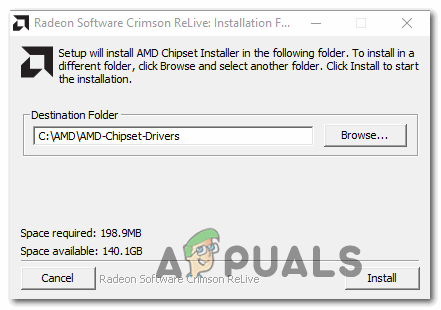
Downloading the latest AMD chipset driver - Once the installation is complete, reboot your computer and see if the issue is resolved once the next startup is complete.
In case you’re still seeing the same “Driver PCI returned invalid ID for a child device” error or this method was not applicable, move down to the next potential fix below.
Method 4: Update BIOS / UEFI Version
As it turns out, you can also expect to see this error due to an outdated BIOS version that’s making your system unstable under heavy loads. This is likely if you only see thus Event Viewers with the “Driver PCI returned invalid ID for a child device” error popping up when your computer is under heavy loads.
Several affected users that were previously encountering the same problem have reported that they finally managed to fix the issue by updating their BIOS version to the latest version available – Of course, the process of doing this will be different depending on your motherboard manufacturer. But fortunately, most manufacturers have developed their own flashing utilities that will make this process a whole lot easier.
If you want to pursue this fix, the best thing you can do is follow the official (updated) documentation supplied by your motherboard manufacturer. Typically, you can find it quite easily simply by doing a web search on ”*Your motherboard model* + BIOS Update.
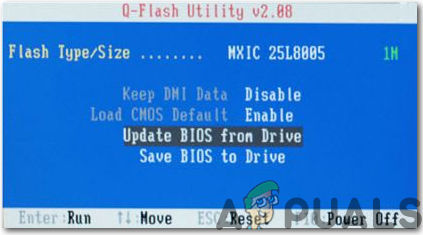
Important: Keep in mind that in case you skip some steps or do the procedure wrong, you have the potential of bricking your motherboard. So unless you don’t have experience with updating your BIOS firmware, our recommendation is to stay away from this procedure. Instead, take your PC to a certified technician.
If this method is not applicable or you already updated your BIOS version and you’re still seeing the same “Driver PCI returned invalid ID for a child device” error, move down to the next potential fix below.
Method 5: Uninstalling Avast Antivirus (if applicable)
If you’re using Avast antivirus as the default AV on your Windows computer, keep in mind that this security suite it’s often reported for causing BSODs of this nature. Unfortunately, we haven’t been able to find a fix for this type of conflict other than uninstalling the problematic tool altogether and replacing it with a more stable 3rd party equivalent or by switching over to the built-in security suite (Windows Defender).
In case this scenario is applicable, follow the instructions below to uninstall Avast antivirus to eliminate the “Driver PCI returned invalid ID for a child device” error:
- Press Windows key + R to open up a Run dialog box. Inside the text box, type ‘appwiz.cpl’ and press Enter to open up the Programs and Features menu.
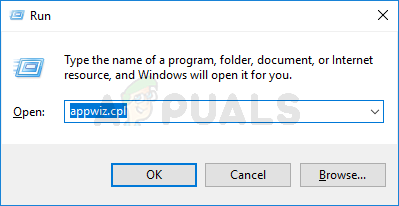
Opening the Programs and Features menu - Inside the Programs and Features menu, scroll down through the list of installed programs and locate the Avast installation. When you see it, right-click on it and choose Uninstall from the context menu that just appeared.
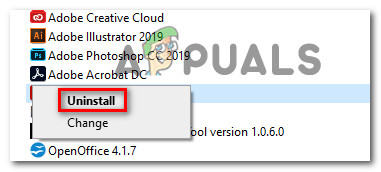
Uninstalling Avast - Inside the uninstallation window, follow the on-screen prompts to complete the uninstallation, then restart your computer and wait for the next startup to complete.
If the same “Driver PCI returned invalid ID for a child device” error is still appearing even after you’ve installed the problematic security suite or this method was not applicable, move down to the next potential fix below.
Method 6: Resetting every Windows Component
In case none of the methods above have worked for you, you should start considering the fact that you might be dealing with some kind of system file corruption that affects the stability of your OS installation.
If you find yourself in this scenario, the best course of action is to reset every relevant Windows component with a procedure from the ones below:
- Repair install (in-place repair) – Go for this operation in case you have critical information on your C drive that you’re looking to preserve personal files, installed applications, games, and other types of personal media. But keep in mind that in order to go for this procedure, you need to insert or plugin compatible installation media to perform this operation.
- Clean install – In case you’re not currently storing any important files on the OS drive, you follow through with this procedure instead. This process will not require you to use compatible installation media and you can start it directly from the Windows settings menu.




